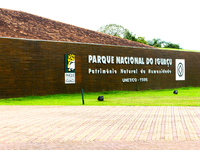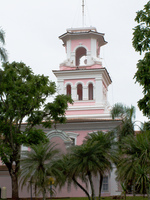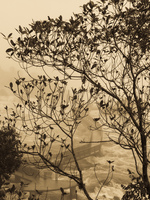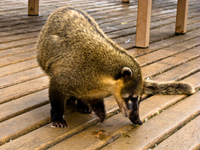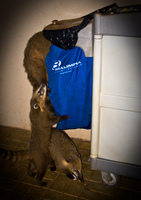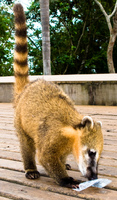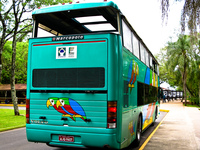iguazu
Their name comes from the Guarani or Tupi words y (water) and as (big). Legend has it that a god planned to marry a beautiful aborigine named Naip , who fled with her mortal lover Tarob in a canoe. In rage, the god sliced the river creating the waterfalls, condemning the lovers to an eternal fall. The first European to find the falls was the Spanish Conquistador lvar N ez Cabeza de Vaca in 1541, after whom one of the falls in the Argentine side is named. The falls were rediscovered by Boselli at the end of the nineteenth century, and one of the Argentine falls is named after him.
Adult coatis measure 33 to 69 cm (13 to 27 inches) from head to the base of the tail, which can be as long as their bodies. Coatis are about 30 cm (12 inches) tall at the shoulder, and weigh between 3 and 8 kg (between 6 and 18 pounds), about the size of a large housecat. Males can become almost twice as large as females and have large, sharp canine teeth.
All coatis share a slender head with an elongated, flexible, slightly upward-turned nose, small ears, dark feet, and a long, non-prehensile tail used for balance and signaling.
Coatis, genera Nasua and Nasuella, also known as Brazilian aardvarks, Mexican tejon, hog-nosed coons, pisotes, and snookum bears, are members of the raccoon family (Procyonidae). They are diurnal mammals native to South, Central, and south-western North America. The word "coatimundi" (pronounced /koʊˌɑːtɨˈmʌndi/ ) is a commonly used misnomer applied to solitary adult males of N. nasua. The term is reported to be derived from the Tupi language (Brazil).
Coatis are omnivores; their diet consists mainly of ground litter invertebrates and fruit (Alves-Costa et al. 2004, 2007, Hirsch 2007). They also eat small vertebrate prey, such as lizards, rodents, small birds, and bird's eggs. The snout, with a formidable sense of smell, assists the skilled paws in a hog-like manner to unearth invertebrates.


